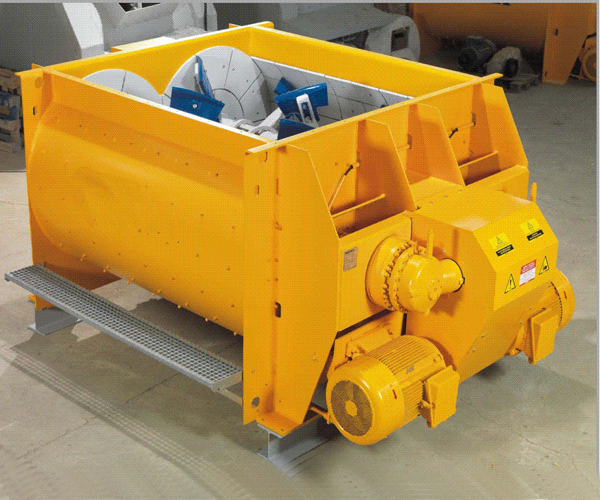Twin Shaft Concrete Mixer | Balaji Construction Machines & Spares, Satara
The Rapid twin shaft concrete mixer offers a robust and compact design with thorough mixing of all aggregates. With its large output capabilities from 1.7m3 to 4.5m3 and fast mixing time, the Rapid Twin Shaft is ideal for use in the ready-mix industry.
At present, most of the ready-mix concrete plant enterprises use the twin-shaft forced concrete mixer as the mixing machine, and rarely use the single-shaft forced concrete mixer. The main reasons are the aspects of mixing principle, wear resistance and performance advantages. Let's take a look at the reasons for choosing the twin-shaft forced concrete mixer as the mixing machine.
1. Mixing principle
The mixing of the twin-shaft forced concrete mixer not only occurs in the radial direction but also in the axial direction. The main agitation zone is located in the circumferential direction of the agitating body, and the agitation space can be fully utilized, so that the aggregate, cement and water are in the low-speed circumference of the agitating blade, achieve a uniform mixing mode in a short period of time and achieve a good mixing effect. The single-shaft concrete mixer is the same as the self-drop concrete mixer. The effective working volume is smaller than the theoretical design volume. The height of the whole machine is much larger than that of the twin-shaft concrete mixer. The actual production efficiency of the single-shaft concrete mixer in the production of ready-mix concrete is lower than the rated production efficiency.
2. Abrasion resistance
The mixing principle of the twin-shaft forced concrete mixer determines that most of the concrete is piled up between the two mixing shafts during the ready-mix concrete batching plant production process, so that the wear between the mixing arm and the blade and the bottom lining is reduced, double-shaft forced concrete mixer liners can only be made of ordinary steel or wear-resistant cast iron. However, the single shaft forced mixer must raise the concrete to a high position and must use a high-speed selection. The wear of the mixing blades is large, and expensive steel is required to be used, and the maintenance cost is increased.
3. Stirring performance
The twin-shaft forced concrete mixer has high mixing efficiency and is equipped with a hydrostatic starter. The stirring noise is small, and the stirring material is directly placed at the discharge port after the mixing is completed, and the discharging time is short. Due to the limitation of the system structure of the single-shaft concrete mixer, the opening size of the discharge door is difficult to adjust, which has a great influence on the discharge of different proportions of concrete. In addition, the discharge door is easily stuck during the closing process, especially in the emergency shutdown state, problems are more likely to occur, and the sealing of the discharge door is poor.
Therefore, the ready-mix concrete plant now mostly uses a twin-shaft forced concrete mixer as a mixing host instead of a single-shaft concrete mixer.

No comments:
Post a Comment